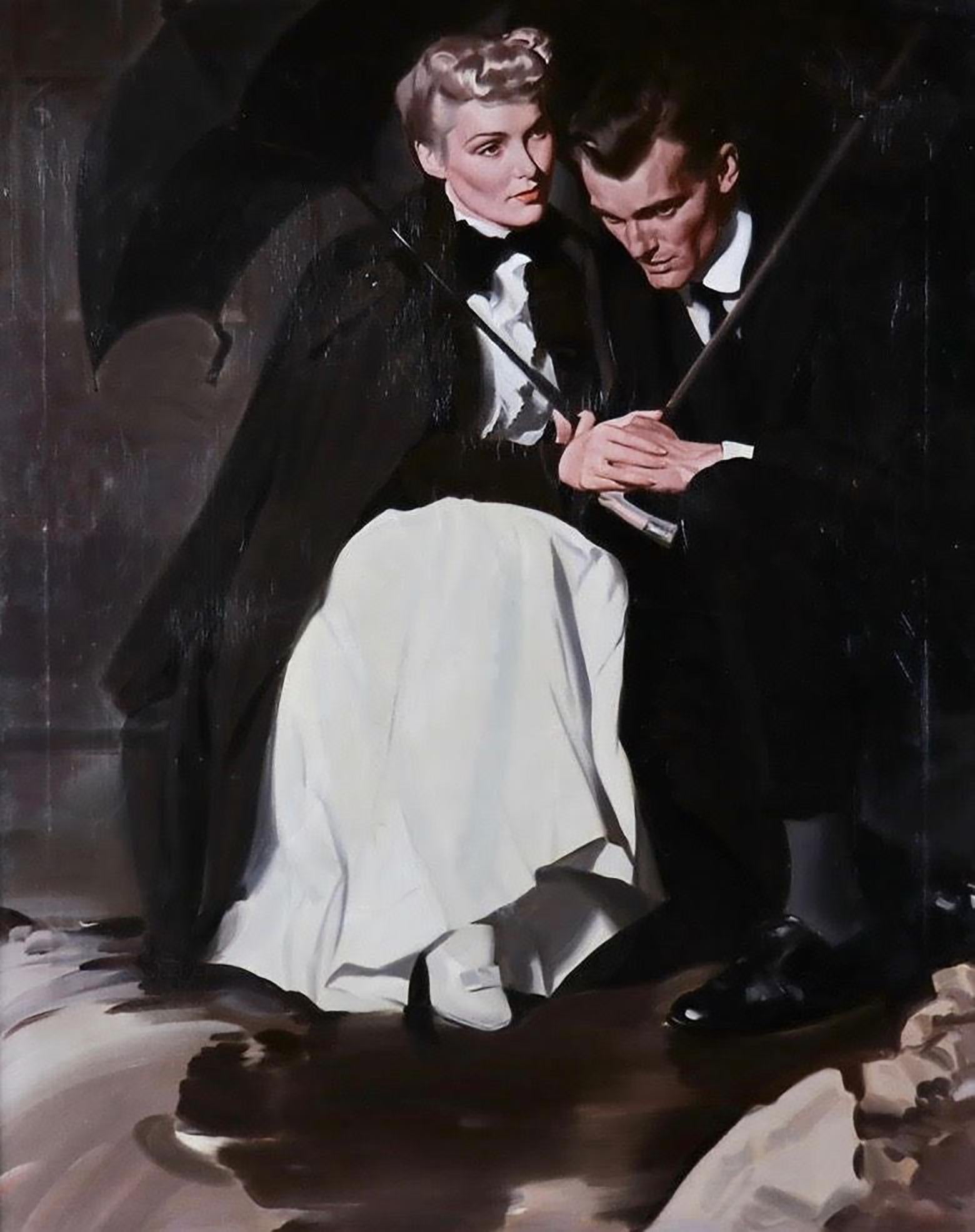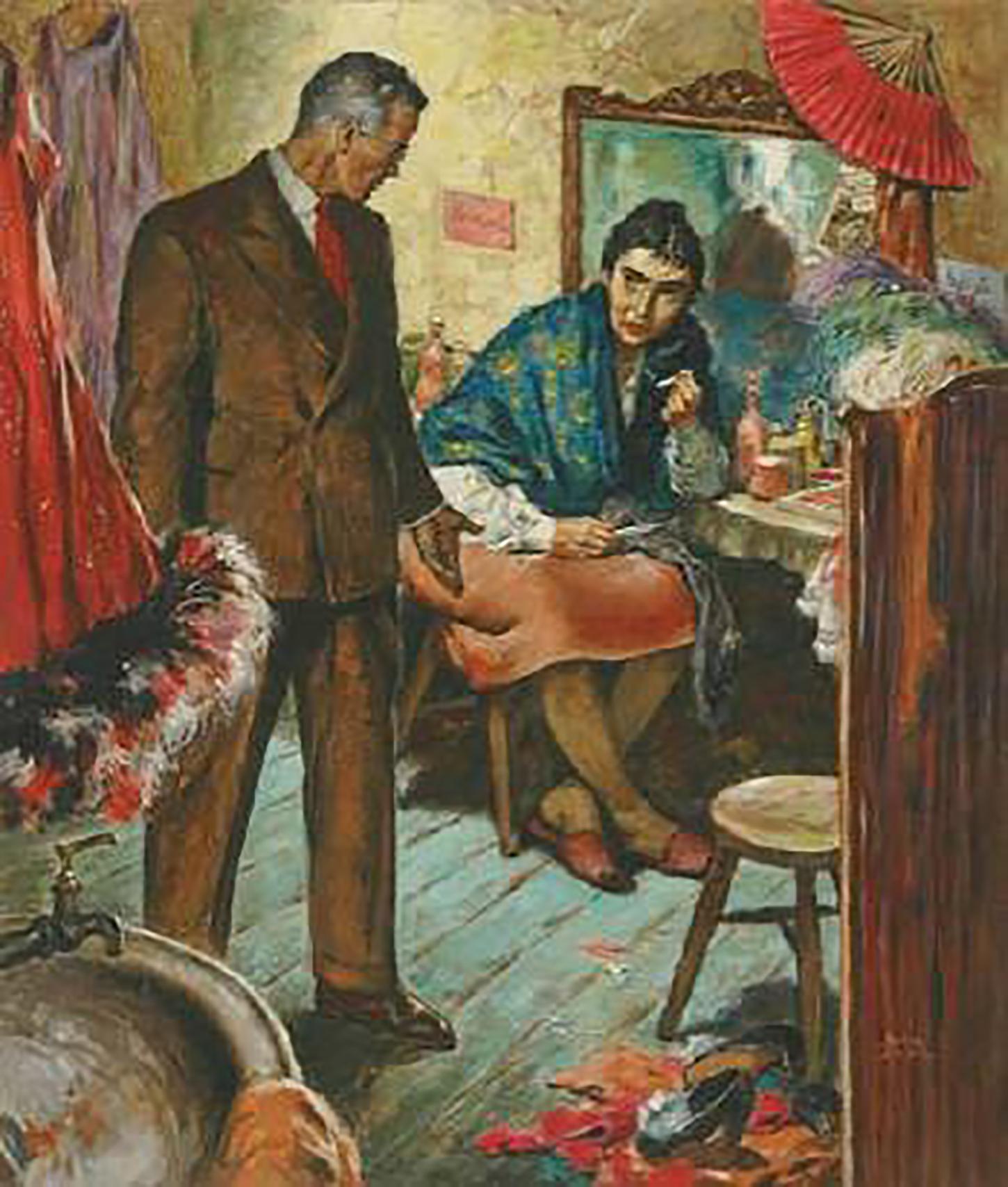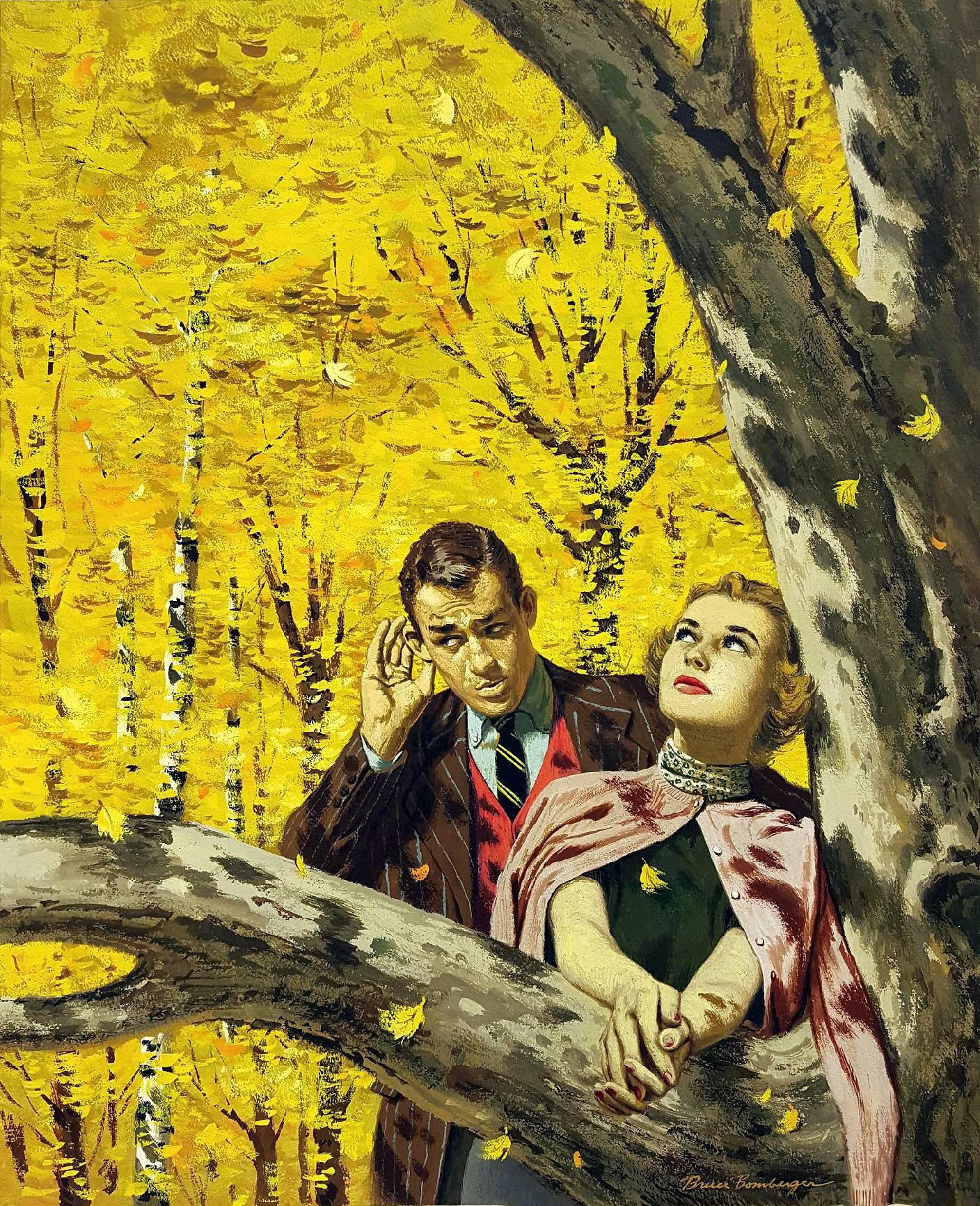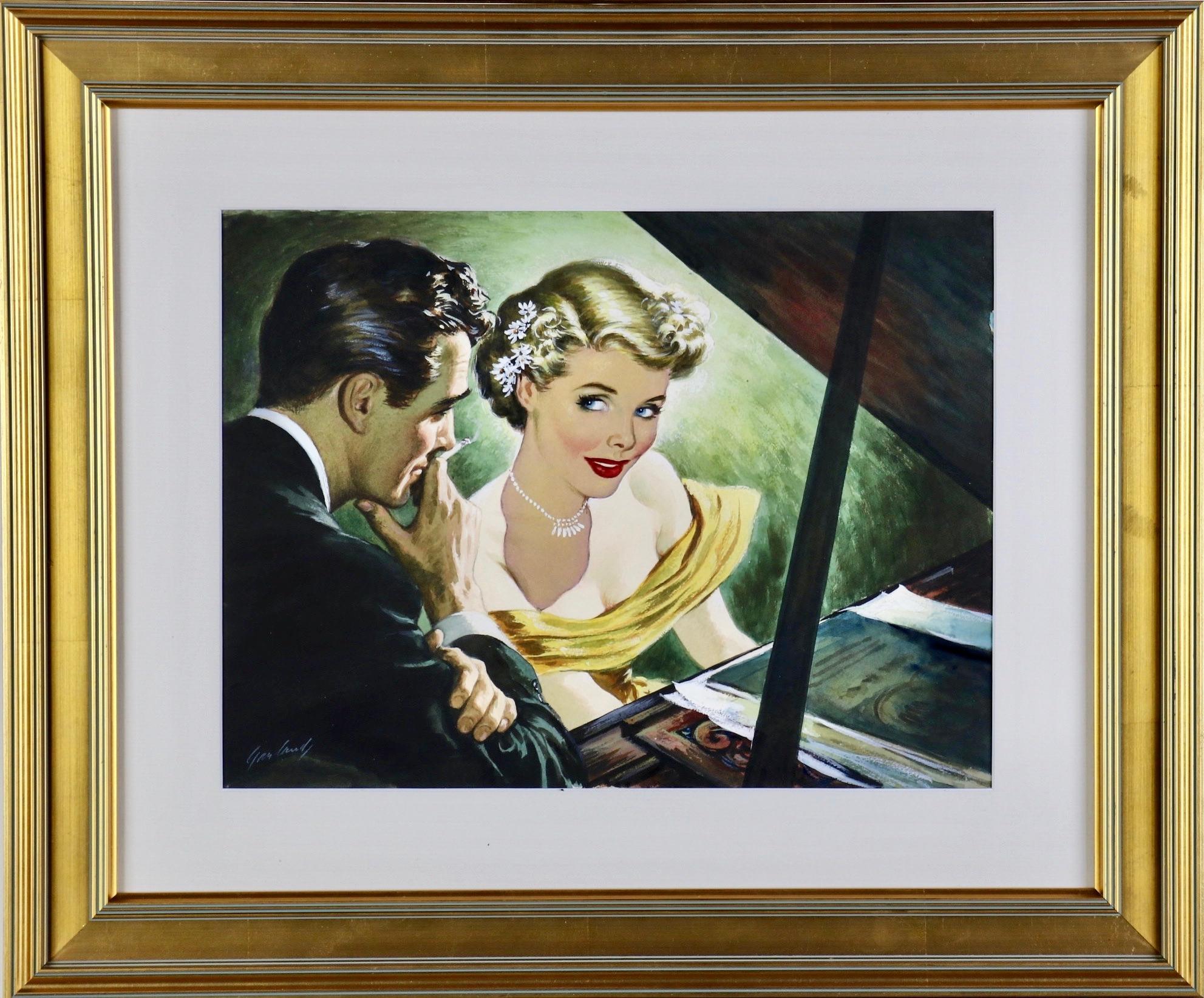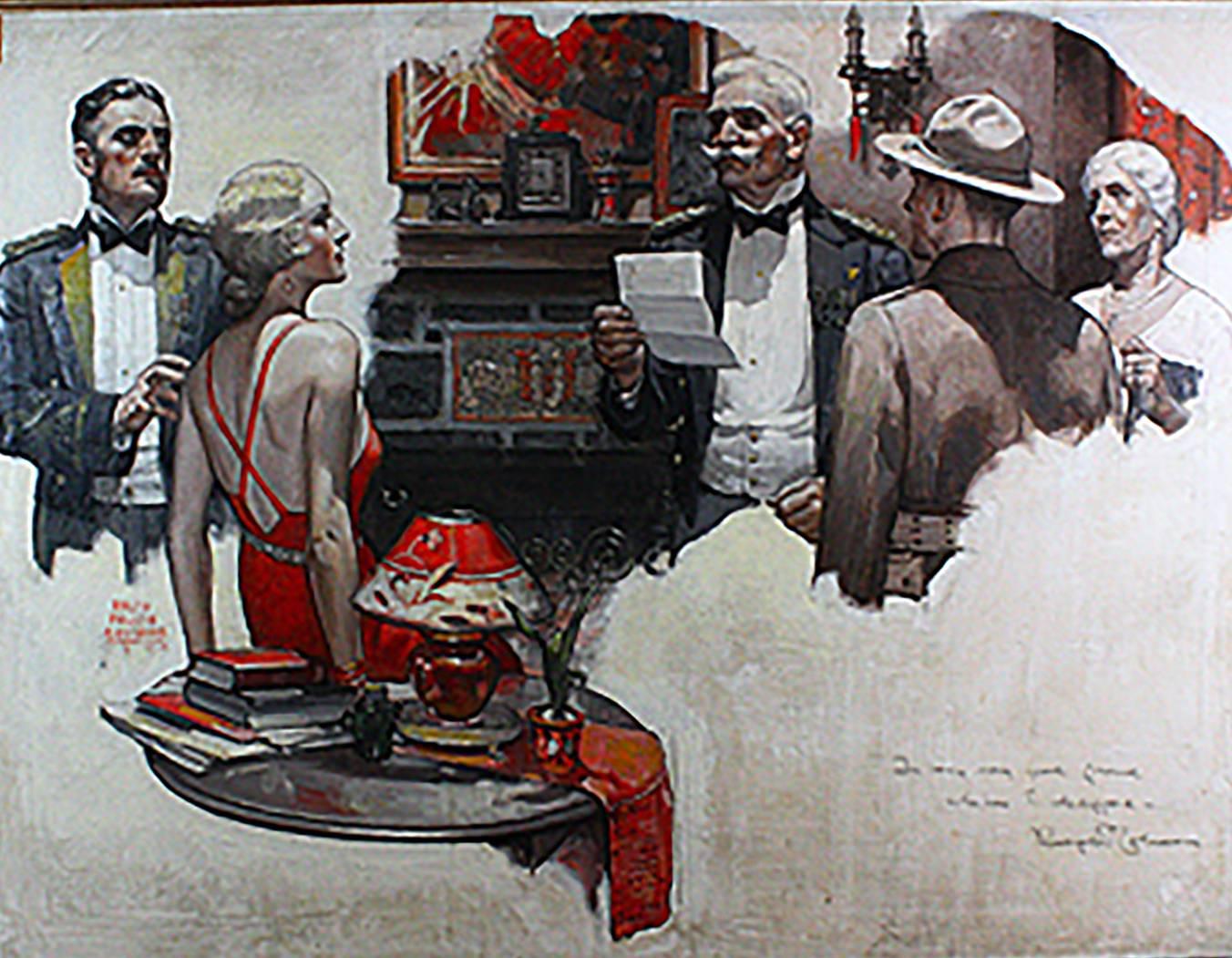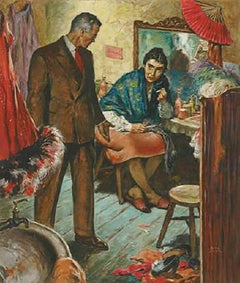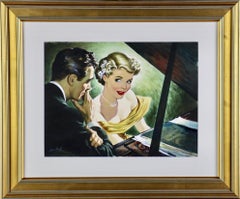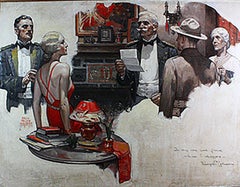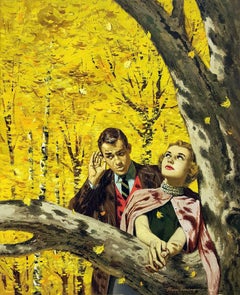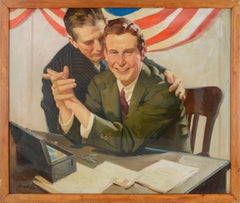Items Similar to "The Final Judgment" Story Illustration, Saturday Evening Post
Want more images or videos?
Request additional images or videos from the seller
1 of 2
Earl Mayan"The Final Judgment" Story Illustration, Saturday Evening Post1960
1960
$5,500
£4,191.89
€4,791.60
CA$7,738.15
A$8,476.91
CHF 4,461.91
MX$101,174.11
NOK 56,878.11
SEK 51,995.16
DKK 35,792.36
About the Item
"The Final Judgment." Illustration for the same-titled story published in The Saturday Evening Post, with their stamp on verso, circa 1960. Signed in image, lower left (disguised as the name engraved on the pillar of a fountain).
- Creator:Earl Mayan (1916 - 2009, American)
- Creation Year:1960
- Dimensions:Height: 26.5 in (67.31 cm)Width: 13.5 in (34.29 cm)
- Medium:
- Period:
- Condition:
- Gallery Location:Fort Washington, PA
- Reference Number:Seller: 44281stDibs: LU384313015242
About the Seller
5.0
Recognized Seller
These prestigious sellers are industry leaders and represent the highest echelon for item quality and design.
Established in 1995
1stDibs seller since 2016
141 sales on 1stDibs
Typical response time: <1 hour
- ShippingRetrieving quote...Shipping from: Fort Washington, PA
- Return Policy
More From This Seller
View All"There is No Love, " Saturday Evening Post Magazine Illustration
By Wilson Mortimer Jr.
Located in Fort Washington, PA
Medium: Oil on Canvas
The oil on canvas illustration is bearing a Saturday Evening Post label verso, used to illustrate the short story There Is No Love, in the October 18th, 1941 i...
Category
1940s Figurative Paintings
Materials
Canvas, Oil
"Remembered Anger, " Story Illustration for the Saturday Evening Post
By Amos Sewell
Located in Fort Washington, PA
Medium: Oil on Board
Signature: Signed Lower Right
Story featured in The Saturday Evening Post, 1945 “Remembered Anger” by Martha Albrand
Story illustration: Man in showgirl's dres...
Category
1940s Interior Paintings
Materials
Oil, Board
"Journeyman Lover" Story Illustration, Saturday Evening Post
By George Garland
Located in Fort Washington, PA
Signed "George Garland" Lower Left by Artist
"To melt this frigid beauty required the services of an expert, someone with a wicked-and-compelling-way with women." Illustration for "...
Category
1940s Paintings
Materials
Gouache, Graphite
Rank and File, Redbook Magazine Illustration
By Ralph Coleman
Located in Fort Washington, PA
Date: 1933
Medium: Oil on Canvas
Dimensions: 28.00" x 36.00"
Signature: Signed Lower Left
1933 Interior Redbook Magazine, November 1933
A large signed and dated oil on canvas by no...
Category
1930s Figurative Paintings
Materials
Canvas, Oil
Country Gentleman, Magazine Cover
By Joseph Francis Kernan
Located in Fort Washington, PA
Country Gentleman, Magazine Cover, June 21, 1924
Joseph Francis Kernan was a sportsman all of his life and the majority of his subjects featured, as he described it, "the human side of outdoor sports, hunting, fishing and dogs." These were the ideal subjects for magazine covers and his work appeared on all of the major - and some minor- magazines, including The Saturday Evening Post, Collier's, Liberty, The Country Gentlemen, Capper's Farmer, The Elks, Outdoor Life, and The Associated Sunday Magazines. His work was also commissioned for calendars, and advertisers such as Fisk Tires, International...
Category
1920s Other Art Style Paintings
Materials
Canvas, Oil
I Promised My Wife, Liberty Magazine Cover
By Leslie Thrasher
Located in Fort Washington, PA
“I Promised My Wife: Sandy’s Business Trip Adventures,” original cover for Liberty magazine, published September 24, 1927
Traveling on a business trip, Sandy ventures out of his cut...
Category
1920s Figurative Paintings
Materials
Canvas, Oil
You May Also Like
Love Story, Illustration for the Saturday Evening Post
By Bruce Bomberger
Located in Miami, FL
An illustrator for Time, Life, Look, True, True West, Saturday Evening Post, Good Housekeeping, Readers Digest, and others, he also painted for adverti...
Category
1950s American Realist Figurative Paintings
Materials
Gouache
Love Story, Illustration for the Saturday Evening Post
By Bruce Bomberger
Located in Miami, FL
An illustrator for Time, Life, Look, True, True West, Saturday Evening Post, Good Housekeeping, Readers Digest, and others, he also painted for adverti...
Category
1950s American Realist Figurative Paintings
Materials
Gouache
"Successful Campaign" Mid Century Short Story Illustration Original
Located in Soquel, CA
A mid-century American Impressionist oil painting depicting two men with an American Flag in the background by Charles Ross Kinghan (American, 1895-1984). Like much of Kinghan's work, this painting is the original that was used for short story illustration.
Signed "Kinghan" lower left. Presented in a wood frame. Image, 24"L x 20"H. Frame, 22"H x 26"W.
Charles Ross Kinghan was born in Anthony, Kansas on January 18, 1895. A teacher, he moved to Wichita as a teenager and did sign painting for the Western Sign Works. Kinghan later studied at the Chicago Academy of Fine Art in 1916, the American Academy of Art in Chicago, the Audubon School of Art and the Art Institute of Chicago. He was a pupil of Carl Scheffler, J. Wellington Reynolds, and H.A. Oberteuffer.
He taught at the Art Institute of Chicago and at the American Academy of Art in Chicago. He was an illustrator for McCalls, Good Housekeeping, Saturday Evening Post, Colliers, and many other magazines including American Artist magazine.
He was author and illustrator of Rendering Techniques for Commercial Art and Advertising (1956) and of Ted Kautzky...
Category
Mid-20th Century American Impressionist Figurative Paintings
Materials
Canvas, Oil
$1,720 Sale Price
20% Off
Benjamin Stahl Illustration
By Benjamin Stahl
Located in San Francisco, CA
Benjamin Stahl: 1910-1987. Well listed illustrator with auction records over $10,000. I bought this fabulous illustration 15 years ago and it has been hanging on my wall ever since....
Category
Mid-20th Century Figurative Paintings
Materials
Mixed Media
William Fisher Classic American Illustration on Canvas
Located in New York, NY
William Fisher (American, 1891-1985)
Untitled, 20th Century
Oil on canvas/illustration
23 3/4 x 29 3/4 in.
Framed: 31 x 37 1/4 x 1 in.
Signed lower right: William Fisher
William Fis...
Category
20th Century American Modern Figurative Paintings
Materials
Canvas, Oil
Wide-Open Throttle Illustration for Saturday Evening Post. Grisaille Painting.
By Grattan Condon
Located in Marco Island, FL
Illustration by Grattan Condon for the February 8, 1930 Saturday Evening Post story entitled "Wide-Open Throttle" by A.W. Somerville, which appeared on page 56. The tension between ...
Category
1920s American Realist Figurative Paintings
Materials
Oil, Canvas
More Ways To Browse
The Saturday Evening Post
Vintage Saturday Evening Post
Saturday Evening Post Illustration
Charles Keeling Lassiter
Consuelo Castaneda
Death Spray
Decoupage Framed Art
Gian Garofalo
Globe De Mariee
International Vintage Poster Fair
Isabel Ritter
J Schwartz
Jose Luis Rey Vila
Karen Rifas
Lenore Tawney
Luis Frangella
Maija Peeples Bright
Martin Adalian
